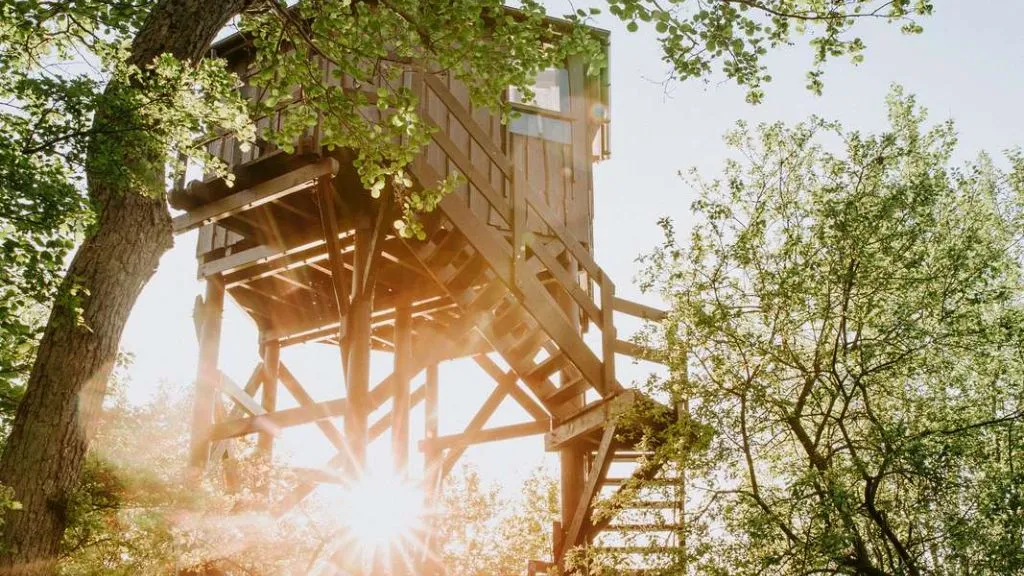One of Zealand’s most important bird reserves
Covering 300 hectares, the reserve is home to the largest reedbed in eastern Denmark. It hosts a rich birdlife year-round, including marsh harrier, bearded tit, bluethroat and osprey. The area also supports amphibians, insects and wetland plants – as well as grass snakes and alder trees, the latter sometimes referred to as Denmark’s ‘mangrove’.
Paths, towers and boardwalk
A 1 km nature trail connects the reserve’s two birdwatching towers, offering panoramic views of the lake, meadows and forest. From the western tower, a 450-metre boardwalk leads deep into the reedbed – a rare experience in Denmark. Benches are placed along the route, and the full circular walk from the Østrup car park, through the reeds and back, is around 3.5 km.
Nature through the seasons
Visitors can enjoy different plants and animals depending on the season. Spring brings blooming wood anemones and nesting birds; summer offers an abundance of reedbed activity; autumn sees large flocks of migrating birds; and winter is the time to spot siskins and various ducks. Each visit offers something new for bird enthusiasts.
Facilities and access
By the car park on Store Valbyvej, you'll find a small nature room with illustrated panels showcasing the area's birds. From here, the nature trail to the towers and boardwalk begins. Entry to the reserve is free. The lake is also part of the Jyllingesløjfen cycling route, which passes nearby.
Conservation and protection
The Danish Bird Protection Foundation (Fugleværnsfonden) acquired much of the area in 1984 to restore the lake and safeguard the wildlife after years of pollution. Today, management includes reed harvesting, high water levels and grazing cattle on the meadows. These efforts help sustain a thriving environment for birds, plants and insects – making Gundsømagle Lake one of the most ecologically valuable sites in Zealand.
















